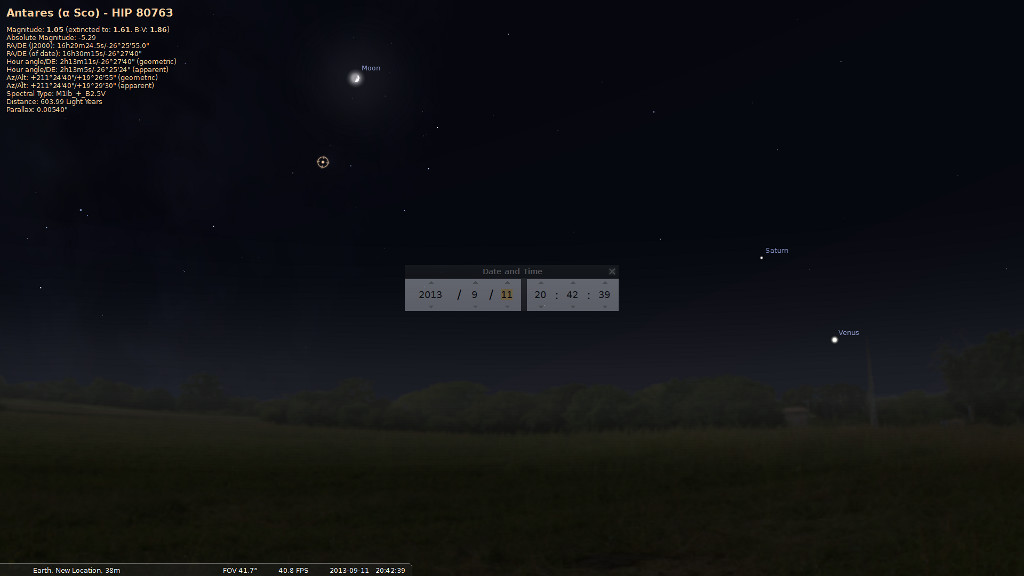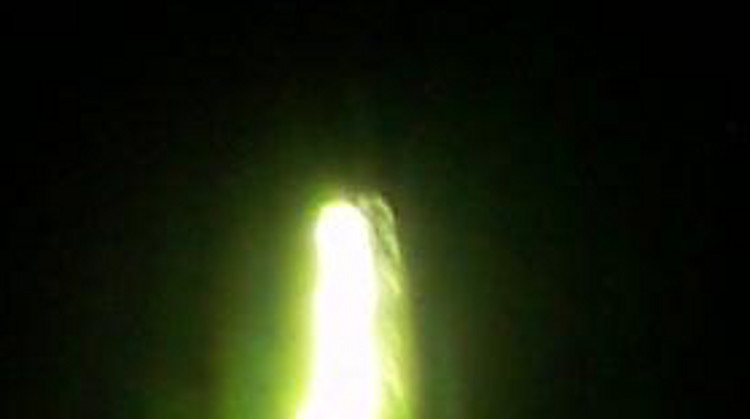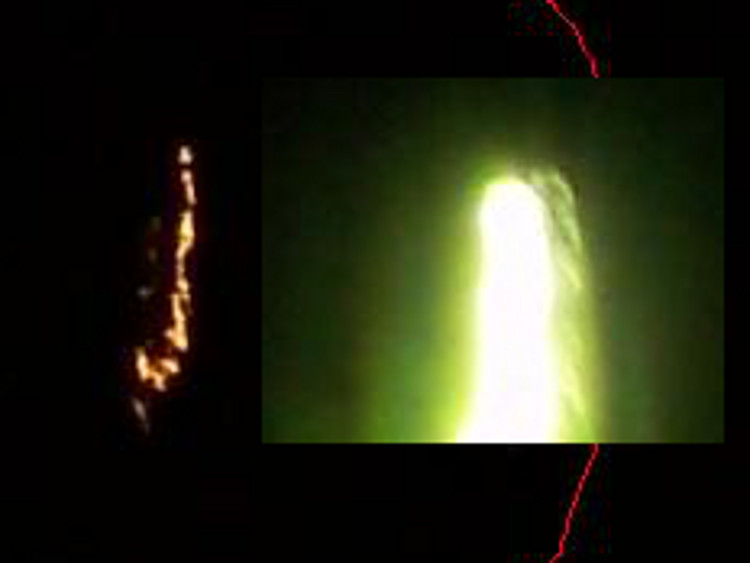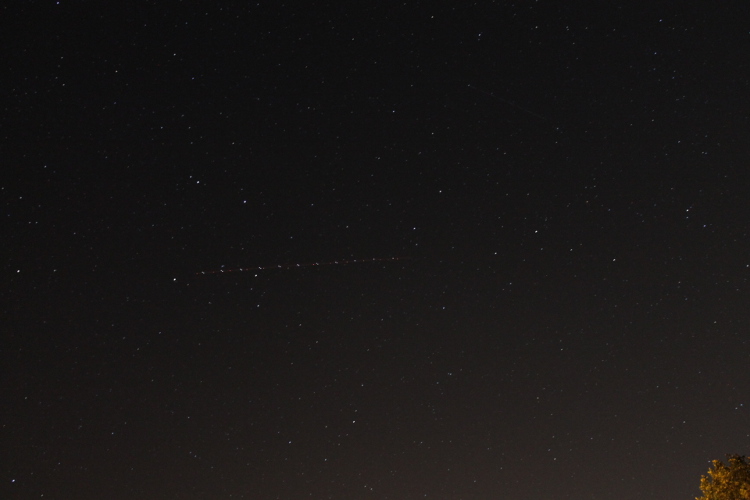It looks like you're using an Ad Blocker.
Please white-list or disable AboveTopSecret.com in your ad-blocking tool.
Thank you.
Some features of ATS will be disabled while you continue to use an ad-blocker.
share:
reply to post by sled735
burning for a month in the same spot every night and nobody knows what it is?
aaaand NASA, nor SETI, nor thousands of scientists nor UFO hunters are there investigating?
am I missing something? please enlighten me if I am, I went through the thread, but I'm on a mobile device so maybe I'm missing a link or something.
but those pics, that is a TEXTBOOK PHOTO OF A FLARE.
burning for a month in the same spot every night and nobody knows what it is?
aaaand NASA, nor SETI, nor thousands of scientists nor UFO hunters are there investigating?
am I missing something? please enlighten me if I am, I went through the thread, but I'm on a mobile device so maybe I'm missing a link or something.
but those pics, that is a TEXTBOOK PHOTO OF A FLARE.
reply to post by ltinycdancerg
It just looks like a bright orange "star" to the naked eye. I suppose most people are like me. The first time I saw it I noticed it was bigger than the other stars, but I didn't really pay it that much attention. As I said earlier, it only got my attention when I noticed it being in different places of the sky this week. So I took a picture to get a closer look.
Beats me why NASA hasn't reported anything. But, do you seriously think they would? LOL
It just looks like a bright orange "star" to the naked eye. I suppose most people are like me. The first time I saw it I noticed it was bigger than the other stars, but I didn't really pay it that much attention. As I said earlier, it only got my attention when I noticed it being in different places of the sky this week. So I took a picture to get a closer look.
Beats me why NASA hasn't reported anything. But, do you seriously think they would? LOL
The next tior you see it please note the exact time, compass direction you are facing, and hold out you hand at arms length, with your fingers closed
and your palm facing you and estimate how many hand widths about the horizon it is.
If you have an iPhone or other smart phone You can also get you can find an app that has a compass and an inclinometer for grudging angles.
I'm in middle Tennessee so it would be interesting to see if it's visible from where I am.
If you have an iPhone or other smart phone You can also get you can find an app that has a compass and an inclinometer for grudging angles.
I'm in middle Tennessee so it would be interesting to see if it's visible from where I am.
reply to post by mash3d
Unfortunately, I don't own a smart phone, or a compass. But I can do the hand thing.
I gave the approximate location in the first page, or maybe it was the second page, if that will help you any.
Unfortunately, I don't own a smart phone, or a compass. But I can do the hand thing.
I gave the approximate location in the first page, or maybe it was the second page, if that will help you any.
edit on 9/13/2013 by sled735 because: edit
BobAthome
reply to post by w810i
so the Breath of Life weighs 2 oz. cool
If you mean the soul, that is supposedly the theory that some scientists have came up with.
w810i
BobAthome
reply to post by w810i
so the Breath of Life weighs 2 oz. cool
If you mean the soul, that is supposedly the theory that some scientists have came up with.
nope just breath of life,, Soul is much more diverse ,
BobAthome
w810i
BobAthome
reply to post by w810i
so the Breath of Life weighs 2 oz. cool
If you mean the soul, that is supposedly the theory that some scientists have came up with.
nope just breath of life,, Soul is much more diverse ,
Explain if you wouldn't mind.
reply to post by theabsolutetruth
That's what I am thinking...I took some photos and posted them on here bc they were so trippy, ESP. with a long exposure. It was a star (cannot remember which one). NO ONE can HOLD a camera and not get shake for 8 seconds. Not even on the car, you bump it once, it's ruined. Hand held/leaning on something? It's impossible.
I'm thinking it's Jupiter or Saturn, or a star of some sort. Not a celestial being or UFO. Sorry.
That's what I am thinking...I took some photos and posted them on here bc they were so trippy, ESP. with a long exposure. It was a star (cannot remember which one). NO ONE can HOLD a camera and not get shake for 8 seconds. Not even on the car, you bump it once, it's ruined. Hand held/leaning on something? It's impossible.
I'm thinking it's Jupiter or Saturn, or a star of some sort. Not a celestial being or UFO. Sorry.
Can someone address my question about why the middle picture has those colored dots (stars?) and the one prior, and after, doesn't?
They were all taken one after the other.
They were all taken one after the other.
reply to post by Darkblade71
Hi Darblade,Hi sled-you know as a kid looking through the comicbooks,i saw the ads for these-and i always thought,even then-surely,surely this is bs
Anyone here ever ordered some?i would love to hear how they turned out.
Sled this is so weird,eh? fascinating thing,this,i will be checking back to see.
A happy weekend to you both
Hi Darblade,Hi sled-you know as a kid looking through the comicbooks,i saw the ads for these-and i always thought,even then-surely,surely this is bs
Anyone here ever ordered some?i would love to hear how they turned out.
Sled this is so weird,eh? fascinating thing,this,i will be checking back to see.
A happy weekend to you both
reply to post by Raxoxane
Thanks, Raxoxane. You have a good weekend too.
Appreciate you visiting my thread.
Thanks, Raxoxane. You have a good weekend too.
Appreciate you visiting my thread.
sled735
Can someone address my question about why the middle picture has those colored dots (stars?) and the one prior, and after, doesn't?
They were all taken one after the other.
I was wondering that myself. The camera you used wouldn't be able to capture that many stars with such clarity with low noise. I can do that with mine but with the use of a tripod, 12 15 second exposures, stacking, and removing ISO noise. If you can do it with your camera while resting on a car in one shot, lol I'm doing something wrong.
sled735
Can someone address my question about why the middle picture has those colored dots (stars?) and the one prior, and after, doesn't?
They were all taken one after the other.
They are hot pixels generated due to thermal noise from the CCD chip in your camera.
Your type of camera is not really designed for taking very long exposures. The longer the chip is "on" (the longer the exposure), the warmer it gets, and generates "hot" pixels.
As you said, you took the succeeding pictures right after taking the first one, each long exposure the chip is getting hotter.
Other cameras that are designed for taking long exposures are able to cancel out this noise either by keeping the CCD chip cooler or through software.
Post Processing can also remove the noise by "stacking" what we call "Dark Frames" which are pictures taken with the lens cap on for the same duration as the actual pictures at the same temperature (normally taken during photo shoot sessions).
At the date and time of your photographs, several objects are located not too far from the moon:

The most orange looking of these is Antares, a super red giant star that has a orange looking hue to it.
Saturn can also have a faint orange looking light to it.
If we zoom in to the "light source" in the bottom left hand corner of your images, we can see that it is streaked from movement also:


Better yet, we can place them side by side with the "object" in your image:


Those two images clearly show that the camera was being moved during the 8 seconds of exposure time, and both the "object" and "light source" are moving at the same angle in each frame.
You also said that you were hold the camera during the exposure. While I'm sure you thought you were holding it steady against the car, the EXIF data of the images show that the lens setting was at 85mm, which is zoomed in.
Zoomed in like that, even the slightest tremble in your hands or any kind of vibration will cause slight movement in the camera, and for long exposures (8 seconds is quite long), it will create images such as these.
Here is a great example of something moving in the sky during the exposure, but with the camera being held steady by a tripod with no one touching it at all for a long exposure:

The streaking, pulsating object is an air craft with it's navigational lights flying across the sky.
As high up as this object is in the sky, I am surprised that there are not a huge amount of reports of people seeing something strange. It's degree of inclination indicates that it would be seen for many, many miles.
Can we have a day time picture looking in the same direction, less zoomed in that includes a image of the street light? It will allow us to see the angle from it, and also how high up it is from the horizon.
NotApplicable
It is a rip in the fabric of space/time, watch for anything coming out of it!!!
N/A
that was running through my mind when i saw it
IDK what it is back to enlarge image even bigger
no no no! Please read my earlier post.......It is a rare and elusive Space Cheeto!
ltinycdancerg
this is CLEARLY a flare. i am genuinely embarrassed for the OP.
Who's "genuinely embarrassed" now!
edit on 13-9-2013 by grubblesnert because: is any masterpiece ever truly completed?
those enlargements look as if we are seeing the plastic used for high altitude hydrogen/helium balloons taking scientific instruments to the edge of
space
the only thing that blows that theory is your report of seeing the same object over several nights...
we all know that a high altitude hydrogen filled balloon would not be that stationary...it would only be a one time event like a barium rocket test release that paints the night sky in blues, Indigos, orange blobs of color
in my memory of past 1950 launches... these clear plastic bags of helium/hydrogen could be 200 feet long and look like a condom at sealevel... but would expand to a huge sphere as it reached altitude... a broken or deflated balloon woul then look like the enlarged pics in your OP
the only thing that blows that theory is your report of seeing the same object over several nights...
we all know that a high altitude hydrogen filled balloon would not be that stationary...it would only be a one time event like a barium rocket test release that paints the night sky in blues, Indigos, orange blobs of color
edit on 13-9-2013 by St Udio because: (no reason given)
High-altitude balloon
From Wikipedia, the free encyclopedia
Jump to: navigation, search
The BLAST high altitude balloon just before launch on June 12, 2005
High-altitude balloons are unmanned balloons, usually filled with helium or hydrogen, that are released into the stratosphere, generally reaching between 60,000 to 120,000 feet (18 to 37 km). In 2002, a balloon named BU60-1 reached 53.0 km (173,900 ft).[1]
The most common type of high altitude balloons are weather balloons. Other purposes include use as a platform for experiments in the upper atmosphere. Modern balloons generally contain electronic equipment such as radio transmitters, cameras, or satellite navigation systems, such as GPS receivers.
These balloons are launched into what is termed "near space"—the area of Earth's atmosphere where there is very little air, but where the remaining amount generates far too much drag for satellites to remain in orbit.
Due to the low cost of GPS and communications equipment, high altitude ballooning is an popular hobby, with organizations such as UKHAS supporting the development of payloads
in my memory of past 1950 launches... these clear plastic bags of helium/hydrogen could be 200 feet long and look like a condom at sealevel... but would expand to a huge sphere as it reached altitude... a broken or deflated balloon woul then look like the enlarged pics in your OP
edit on
13-9-2013 by St Udio because: (no reason given)
speculativeoptimist
reply to post by Darkblade71
Space Sea Monkey!
You are old friend, err, I mean middle aged, I mean seasoned....wise, that is what I mean. But because I know what you are referring to, so am I!
Now where are my Xray glasses.edit on 12-9-2013 by speculativeoptimist because: (no reason given)
I think you left your x-ray specs with your Baking soda tablet submarine and that 45 you cut off the back of your Quisp cereal.
VeniVidi
reply to post by sled735
The details of the picture show an 8 second exposure. If that is correct then the objects movement may cause it to look like it does.
Why did the exposure effect the other starts which are clearly seen in the enlargement?
Have you considered trying to communicate with it n a deeper level ? Asking what it is maybe Morse code, or even projecting your thought towards it ?
Whatever it may be it's very interesting, and looks quite spectacular I would love to see it in person myself !
Whatever it may be it's very interesting, and looks quite spectacular I would love to see it in person myself !
new topics
-
Gen Flynn's Sister and her cohort blow the whistle on DHS/CBP involvement in child trafficking.
Whistle Blowers and Leaked Documents: 59 minutes ago -
Anybody else using Pomodoro time management technique?
General Chit Chat: 3 hours ago -
Bucks County commissioners vote to count illegal ballots in Pennsylvania recount
2024 Elections: 5 hours ago -
Trump sues media outlets -- 10 Billion Dollar lawsuit
US Political Madness: 6 hours ago -
Fired fema employee speaks.
US Political Madness: 7 hours ago -
How long till it starts
US Political Madness: 8 hours ago -
USSS Agent Fired for Having Sex In Michelle Obama's Bathroom
Politicians & People: 10 hours ago
top topics
-
Trump sues media outlets -- 10 Billion Dollar lawsuit
US Political Madness: 6 hours ago, 21 flags -
Bucks County commissioners vote to count illegal ballots in Pennsylvania recount
2024 Elections: 5 hours ago, 17 flags -
How long till it starts
US Political Madness: 8 hours ago, 15 flags -
USSS Agent Fired for Having Sex In Michelle Obama's Bathroom
Politicians & People: 10 hours ago, 9 flags -
Fired fema employee speaks.
US Political Madness: 7 hours ago, 9 flags -
Watching TV
Jokes, Puns, & Pranks: 12 hours ago, 8 flags -
Gen Flynn's Sister and her cohort blow the whistle on DHS/CBP involvement in child trafficking.
Whistle Blowers and Leaked Documents: 59 minutes ago, 3 flags -
Anybody else using Pomodoro time management technique?
General Chit Chat: 3 hours ago, 2 flags
active topics
-
The Acronym Game .. Pt.4
General Chit Chat • 959 • : JJproductions -
Trump sues media outlets -- 10 Billion Dollar lawsuit
US Political Madness • 34 • : WeMustCare -
The Trump effect 6 days after 2024 election
2024 Elections • 136 • : Xtrozero -
Bucks County commissioners vote to count illegal ballots in Pennsylvania recount
2024 Elections • 17 • : xuenchen -
How can you defend yourself when the police will not tell you what you did?
Posse Comitatus • 81 • : SCUBAPAUL -
Gen Flynn's Sister and her cohort blow the whistle on DHS/CBP involvement in child trafficking.
Whistle Blowers and Leaked Documents • 5 • : xuenchen -
Anybody else using Pomodoro time management technique?
General Chit Chat • 6 • : Cloudbuster1 -
How long till it starts
US Political Madness • 11 • : awhispersecho -
WATCH LIVE: US Congress hearing on UFOs, unidentified anomalous phenomena
Aliens and UFOs • 83 • : DaydreamerX -
The Guardian quits Elon Musk's X social media platform
Mainstream News • 19 • : burntheships
